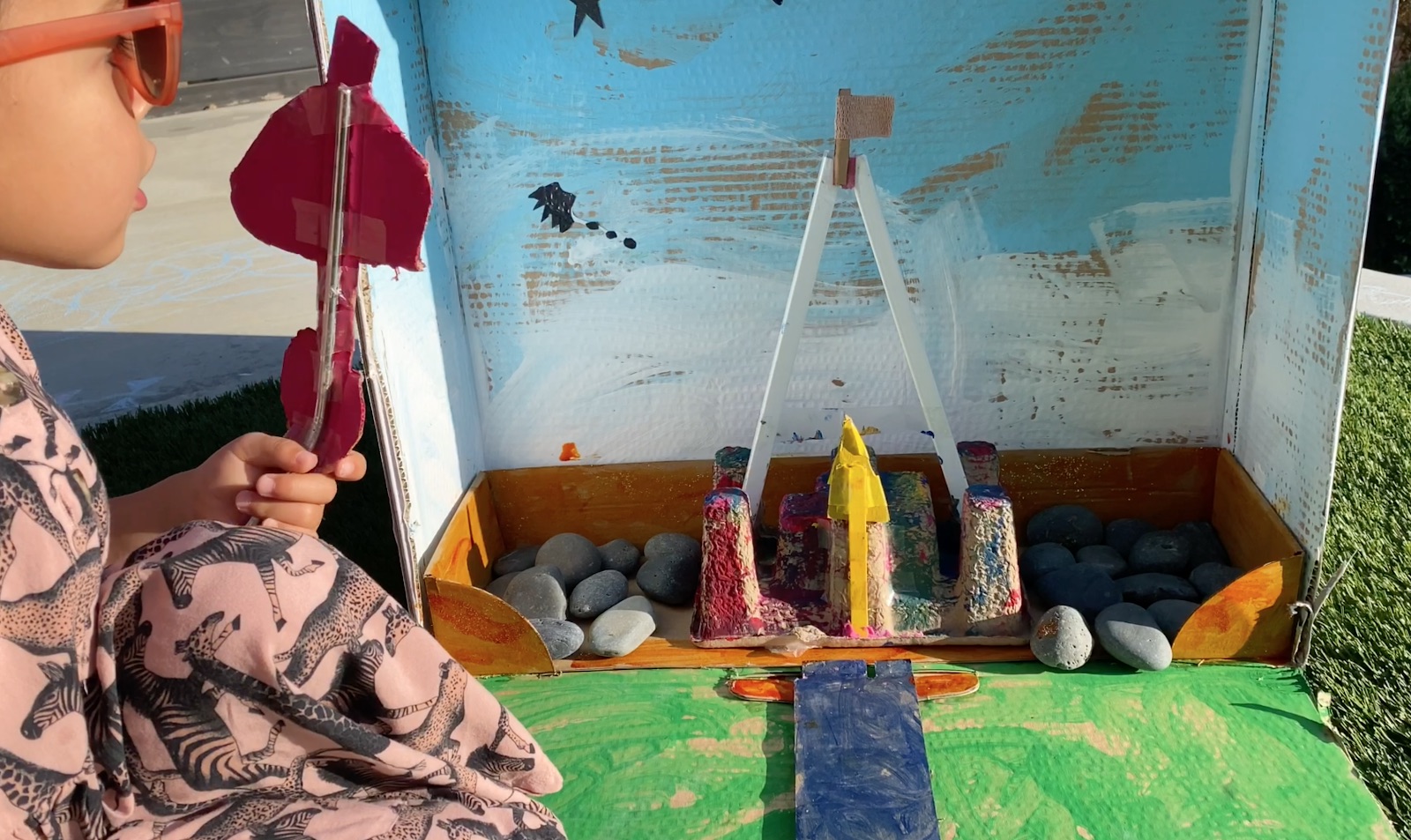Every moment in life is a story, and the most crucial part of teaching storytelling is to value and make space for students’ lives and voices to be heard. When we moved to remote instruction, I wondered how we could teach storytelling in meaningful and personal ways to our class. However, I discovered that one of the advantages of remote instruction is the unique access teachers can have to students’ families and lives. I engaged whole families throughout our storytelling journey, making our learning experiences personal and meaningful.
Stories come in multiple forms, and we honored these differences every week to bring storytelling to life. We began by first exploring materials like colored pencils, paint, pastels, and even recyclable materials. Then, we used these materials to build our stories’ characters and settings. Every week, we dove into elements of storytelling like character building, problems, and how a story builds throughout the beginning, middle, and end. We looked at stories through the lens of songs, the lens of exploring materials, the lens of your family, and even through the lens of math.

We met with students as they worked on creating their own characters and stories. We talked about where their characters were, where the story took place, and how these characters inspire the story. Over time, as we constructed our stories, we began to practice telling these stories. It was at this stage where our storytelling journey turned into a family-centered activity– where storytelling became a huge part of home life as well. Not only were parents continuously videotaping and recording stories, but siblings and grandparents were also involved in telling the stories as well. One of my students even had her sister co-tell stories with multiple characters and props while their parents video recorded them (see image).

Remote learning became a platform for storytelling to become a meaningful and family-driven experience. At the end of the school year, we ended up having a collection of video recorded stories sent by parents and families that were then shared with the rest of the class. Collaboration also looked different in remote learning. In the classroom it would be with peers and possibly the teachers, but in a remote setting, it involved their siblings, parents, and in some cases, grandparents. This multi-generational collaborative learning was pretty unique to this setting. The whole family would get involved in not only the production of storytelling, but in the documentation and sharing of it. There’s something about how remote learning gave us a window of opportunity to go into our students’ homes and get to know so much about them in ways you normally wouldn’t get to do. Ironically, remote learning gave me greater access to my students, their living situations, and their families in ways that I couldn’t predict. When I visit them on Zoom every day, I enter their home and sacred space. I’m aware of their surroundings, the people around them, and how they are in their natural setting. Remote learning gave us the unique opportunity to engage in family-centered ways of creating, learning, and interacting with literature.